Sadly, Bill Keith died on 23 October, 2015. He was to me first a banjo god, then a banjo hero, and ultimately, a friend.
Bill was well known and highly regarded in the banjo community, not only for his bringing melodic-style play to the forefront of three-finger style, but for his co-invention with the late Jim Bump of Keith Tuners which not only obviated having an extra set of cam actuators on the peghead (“Scruggs tuners”), but made possible the accurate on-the-fly retuning of all four strings. Heck, if you want to go all out, install 4 Keith Tuners in addition to a set of Scruggs tuners–talk about some interesting possibilities!
Furthermore, it was Bill Keith who took it upon himself to tab out the body of Earl Scruggs’s recorded work and then convinced him to publish the book Earl Scruggs and the 5-String Banjo. Unfortunately, their joint effort led to a financial disagreement and a lawsuit, and while they did settle, they never reconciled.
In fact, it was their differences that leads me to write this story about Bill. When I was operating my banjo-centric music store, ZEPP Country Music, Inc., I sold Keith Tuners, Keith Tuning Pegs, and Bill Keith-branded strings.
One evening, while I was on the telephone chatting with Bill, he lamented that he had recently been at a bluegrass event also attended by Earl Scruggs, who was to be honored one evening. He told me that he had taken with him all his hand-written transcriptions for the book to show Earl and mentioned even taking along his first edition hardcover copy of the book, all in hopes of reestablishing communication with Earl*.
He then told me that his was a rare copy of the book whereupon and wherein Earl’s name had been misspelled! I was curious, so he explained that in the first printing, “SCRUGGS” had been printed in a rather stylized font, and no one had noticed that it had been misspelled “SGRUGGS” wherever that font had been used.
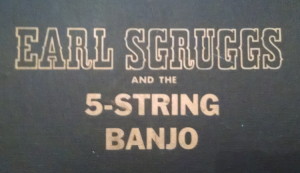
That happened to be the cover, the dust jacket, and the title page inside, which is effectively the dust cover illustration in black and white.
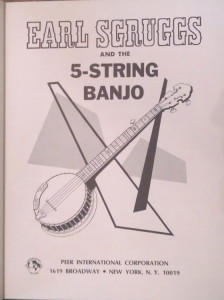 According to Bill, the first person to notice was–naturally–Mr. Scruggs himself.
According to Bill, the first person to notice was–naturally–Mr. Scruggs himself.
While Bill was telling me his story, I had wandered back to my teaching studio where I kept my personal hardcover copy of the book. Guess what? Mine, too, is the misspelled edition. I took it with me the next time Bill and I would be together, and asked him to sign it. He pulled his copy from his car trunk and showed me not just Earl’s signature in it, but the stamp where it had been entered as evidence for the suit Bill filed against Scruggs seeking remuneration for his work.
As he signed my book, he laughed and said: “Be sure Earl doesn’t see this, or he’ll never sign your copy!”.
I always figured that I’d simply present it to Earl with a blank page open, but I just never had the chance, I’m afraid.
The real irony, I suppose, is that I’d had my copy of the book for over 30 years at that point, and I had never noticed the misspelling!
Adieu, Bill, my friend; you shall be sorely missed.
*Bill was very disappointed, because he told me that when he and Earl came upon each other in the hall, Earl would neither look at him nor acknowledge his presence.
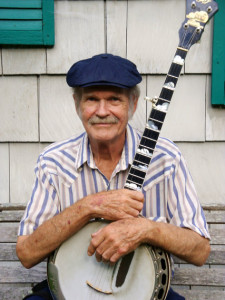

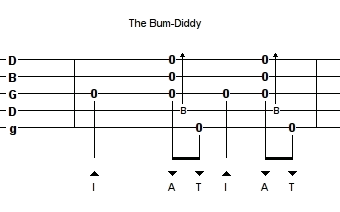 It’s quite a simple approach: One picks upward on a single string, then a beat later brushes a chord down across several strings using the back of one’s ring (or other) finger, which is in turn followed a half beat later by the sounding of the 5th string downward with the thumb.
It’s quite a simple approach: One picks upward on a single string, then a beat later brushes a chord down across several strings using the back of one’s ring (or other) finger, which is in turn followed a half beat later by the sounding of the 5th string downward with the thumb. 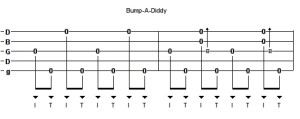 ply “diddy diddy diddy diddy,” i.e. a stream of eighth notes (occasionally interrupted by leaving out an eighth note for emphasis).
ply “diddy diddy diddy diddy,” i.e. a stream of eighth notes (occasionally interrupted by leaving out an eighth note for emphasis).